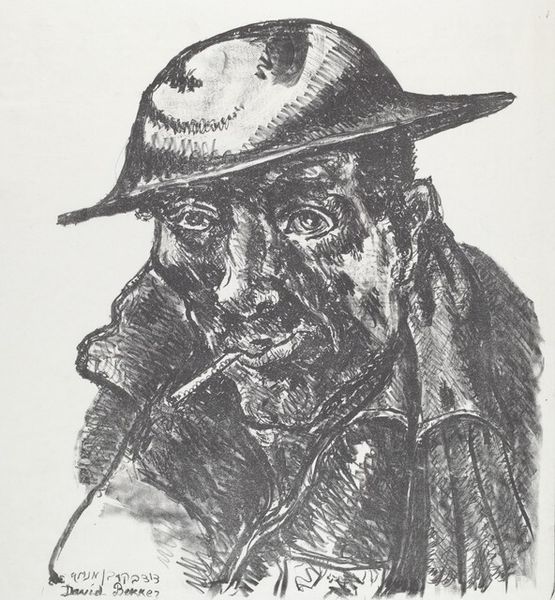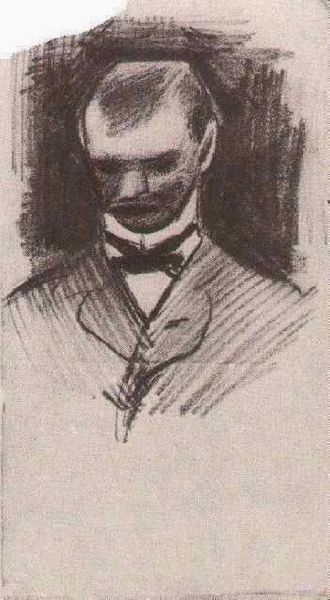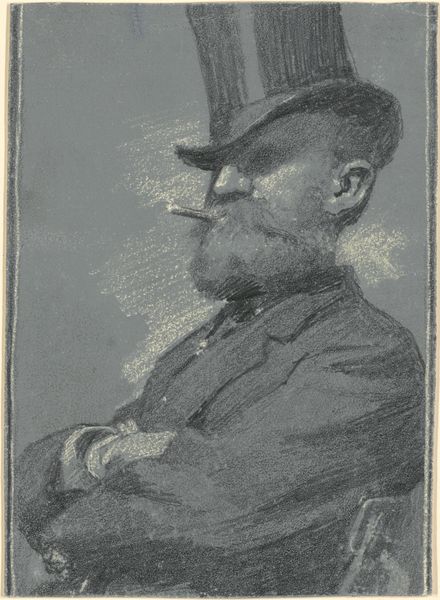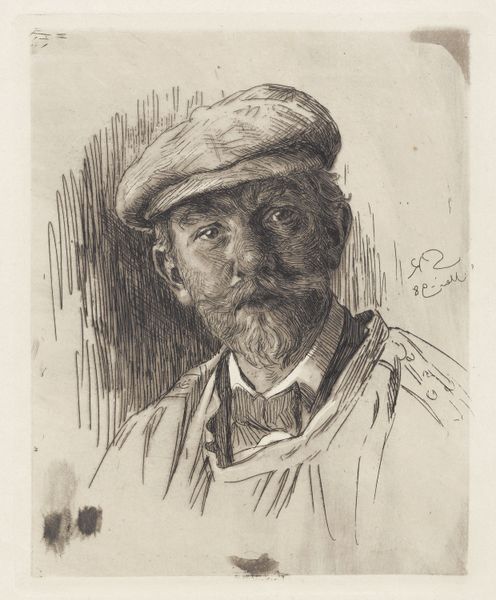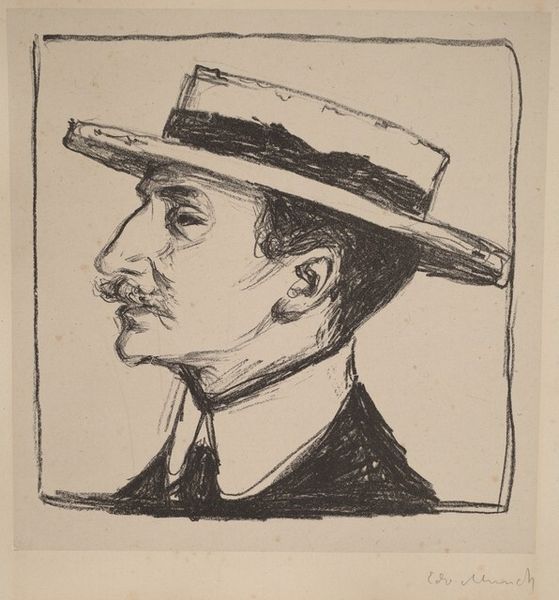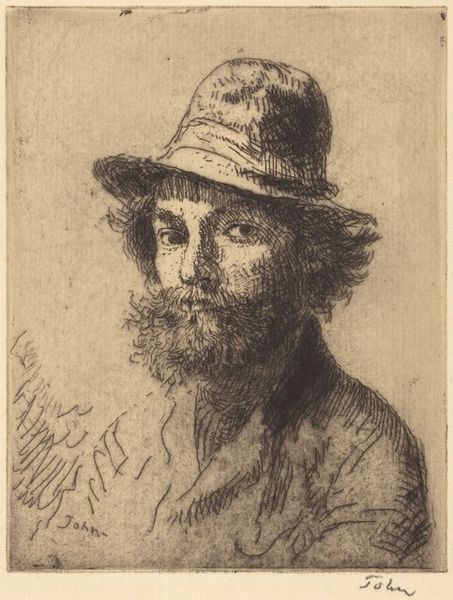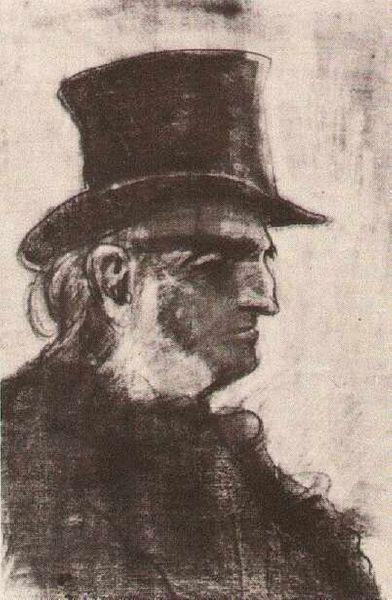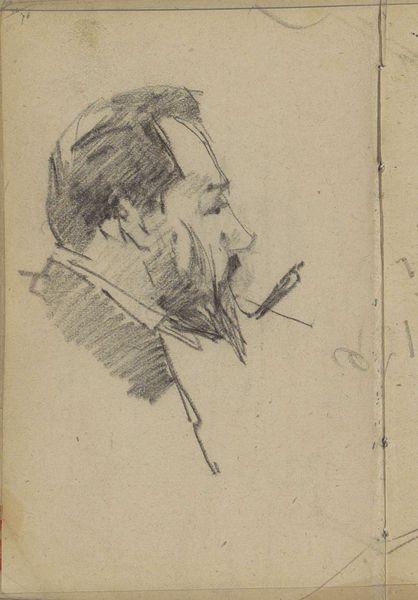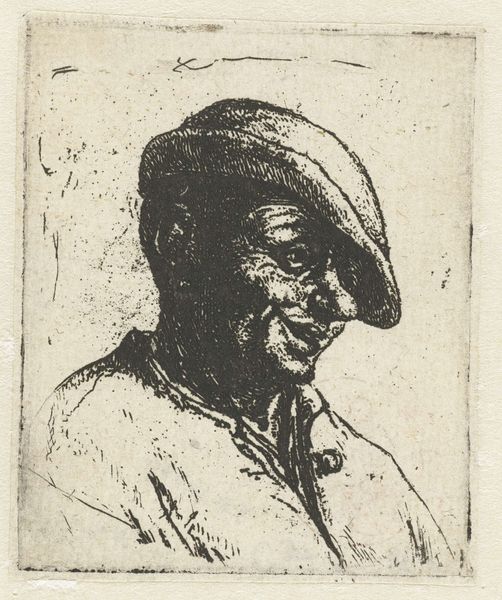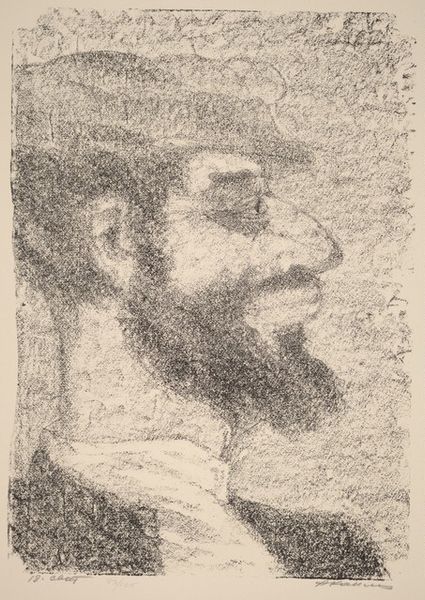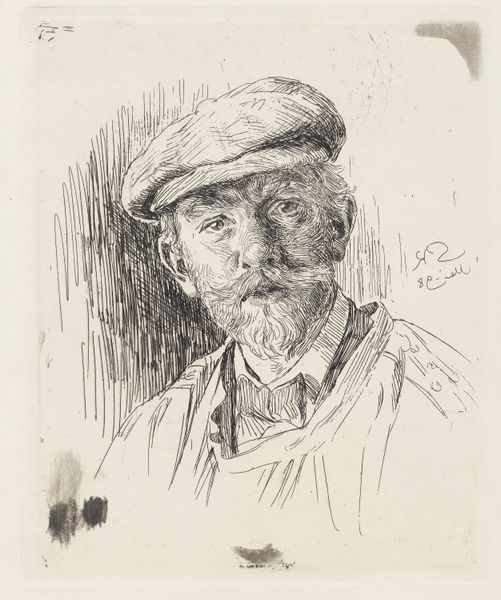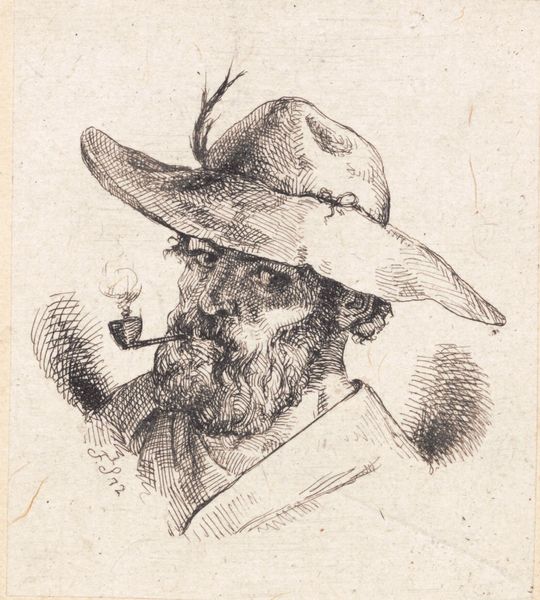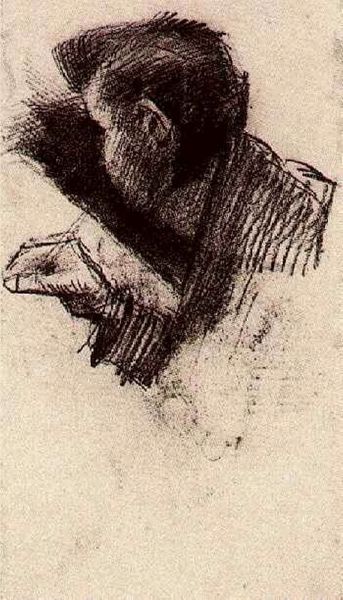
drawing, dry-media, pencil, graphite
#
portrait
#
drawing
#
pencil sketch
#
figuration
#
dry-media
#
male-portraits
#
pencil drawing
#
sketch
#
pencil
#
graphite
#
post-impressionism
Copyright: Public domain
This is 'Head of a Man', a drawing by Vincent van Gogh. The rapid strokes suggest an artist capturing a fleeting image, likely created in the Netherlands. Van Gogh’s choice of subject – a man of the working class, complete with pipe and hat – speaks to his social sympathies. In the 19th century, portraiture was largely the preserve of the bourgeoisie. By turning his attention to the everyday individual, Van Gogh was democratizing the very act of representation. Furthermore, the institutionalisation of art at the time was largely driven by the French ‘Salon’ system, which favored historical and mythological scenes. Van Gogh’s commitment to contemporary life sets him apart from this conservative establishment. To understand Van Gogh fully, we must delve into the social contexts that shaped his vision, consulting letters, biographies, and critical analyses of his time. Art is always a product of its time, reflecting the values and concerns of the society that produced it.
Comments
No comments
Be the first to comment and join the conversation on the ultimate creative platform.
